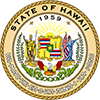The Prospective Drug Utilization Review (ProDUR) process promotes optimal and cost-effective use of pharmaceuticals, lessens the chance of unnecessary or inappropriate use of medications, helps identify possible drug-related problems, and promotes optimal clinical outcomes.
Prospective DUR occurs during point-of-sale claims adjudication, before the prescription is dispensed. The DUR modules analyze paid claims history to determine whether the current prescription is in conflict with any other prescriptions for the recipient.
If any of the potential problems described below are detected, the PDCS immediately sends a DUR response to the pharmacist. These responses are specifically formatted to provide precise information regarding the conflict. These messages will accompany a claim regardless of its payment status.
- Therapeutic Duplication Alert (Reject 88, EOB 707, Conflict TD)
- Drug-Drug Interaction Alert (Reject 88, EOB 702, conflict code DD)
- High Dose (Reject 88, EOB 700, Conflict HD)
- Low Dose Alert (88, EOB 720, Conflict LD)
- Ingredient Duplication Alert ((Reject 88, EOB 719, Conflict ID)
- Age Precaution Alert (Reject 88, EOB 705, Conflict PA)
- Gender Precaution Alert (Reject 88, EOB 733, Conflict SX)
- Maximum Duration of Therapy Alert (Reject 88, EOB 734, Conflict MX)
- Pregnancy Alert (Reject 88, EOB 706, Conflict PG)
A summary of the NCPDP Conflict, Intervention, and Outcome Codes which pharmacies may use to override the alerts discussed above, are provided below. An intervention/outcome code is only needed for denied claims. Some ProDUR edits and set to “post and pay”.
Edit 88 – Drug Utilization Review Conflict Code Table
DUR Conflict Code
|
Description
|
PA
|
Age Alert
|
SX
|
Gender Alert
|
LD
|
Low Dose
|
HD
|
High Dose
|
ER
|
Early Refill
|
TD
|
Therapeutic Duplication
|
ID
|
Ingredient Duplication
|
DD
|
Drug-Drug Interaction
|
MX
|
Excessive Duration
|
DUR Intervention Code Table
Code
|
Meaning
|
Code
|
Meaning
|
MØ
|
MD Interface
|
TH
|
Therapeutic Product Interchange
|
PØ
|
Patient Interaction
|
AS
|
Patient Assessment
|
RØ
|
Pharmacist Reviewed
|
DE
|
Dosing Evaluation/Determination
|
CC
|
Coordination of Care
|
GP
|
Generic Product Selection
|
FE
|
Formulary Enforcement
|
MR
|
Medication Review
|
MA
|
Medication Administration
|
PH
|
Patient Medication History
|
PE
|
Patient Evaluation/Instruction
|
PT
|
Perform Laboratory Tests
|
PM
|
Patient Monitoring
|
SC
|
Self-Care Consultation
|
RT
|
Recommended Laboratory Test
|
TC
|
Payer/Processor Consulted
|
SW
|
Literature Search/Review
|
|
|
DUR Intervention Code Table
Code
|
Meaning
|
Code
|
Meaning
|
1A
|
Filled – False Positive
|
1F
|
Filled – Different Quantity
|
1B
|
Filled as is
|
1G
|
Filled after prescriber approval
|
1C
|
Filled with different dose
|
2A
|
Not Filled
|
1D
|
Filled with different directions
|
2B
|
Not Filled – Directions Clarified |




